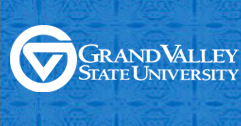Exposure to Hypergravity During Pregnancy and Early Lactation Alters Abundance of Cytoskeletal and Extracellular Matrix Proteins in a Rat Model
Location
Exhibition Hall, DeVos Center
Description
PURPOSE: Complete functional differentiation of the mammary gland is dependent on an integral cytoskeletal support structure and hormonal direction. Furthermore, prolactin released from the brain is indispensable for initiation and maintenance of lactation in all the species so far studied. However, intact cytoskeletal architecture is pivotal for prolactin-mediated development. Therefore, the objective of this study was to determine the effects of chronic hypergravity (HG) exposure from mid-pregnancy to early lactation on pre-partum/postpartum abundance of the cellular scaffolding and connective tissue proteins in the rat mammary gland. SUBJECTS: One group of pregnant Sprague Dawley rats were exposed to either 2g (HG) or 1g (control) from days 11 to 20 of gestation (G20). Another control (1g) and experimental (2g) groups were investigated from days 11 of pregnancy through days 1 (P1) and 3 (P3) postpartum. MATERIALS AND METHODS: On G20, P1 and P3, mammary tissue was collected and processed for immunohistochemical quantification of proteins associated with cellular scaffolding (actin, tubulin cytokeratin, vimentin). RESULTS: At G20, and P3 significant (pCONCLUSION: Our results suggest that abnormal cytoskeletal protein quantities correlate with the reduced mammary metabolic activity in HG-exposed rats.
Exposure to Hypergravity During Pregnancy and Early Lactation Alters Abundance of Cytoskeletal and Extracellular Matrix Proteins in a Rat Model
Exhibition Hall, DeVos Center
PURPOSE: Complete functional differentiation of the mammary gland is dependent on an integral cytoskeletal support structure and hormonal direction. Furthermore, prolactin released from the brain is indispensable for initiation and maintenance of lactation in all the species so far studied. However, intact cytoskeletal architecture is pivotal for prolactin-mediated development. Therefore, the objective of this study was to determine the effects of chronic hypergravity (HG) exposure from mid-pregnancy to early lactation on pre-partum/postpartum abundance of the cellular scaffolding and connective tissue proteins in the rat mammary gland. SUBJECTS: One group of pregnant Sprague Dawley rats were exposed to either 2g (HG) or 1g (control) from days 11 to 20 of gestation (G20). Another control (1g) and experimental (2g) groups were investigated from days 11 of pregnancy through days 1 (P1) and 3 (P3) postpartum. MATERIALS AND METHODS: On G20, P1 and P3, mammary tissue was collected and processed for immunohistochemical quantification of proteins associated with cellular scaffolding (actin, tubulin cytokeratin, vimentin). RESULTS: At G20, and P3 significant (pCONCLUSION: Our results suggest that abnormal cytoskeletal protein quantities correlate with the reduced mammary metabolic activity in HG-exposed rats.
